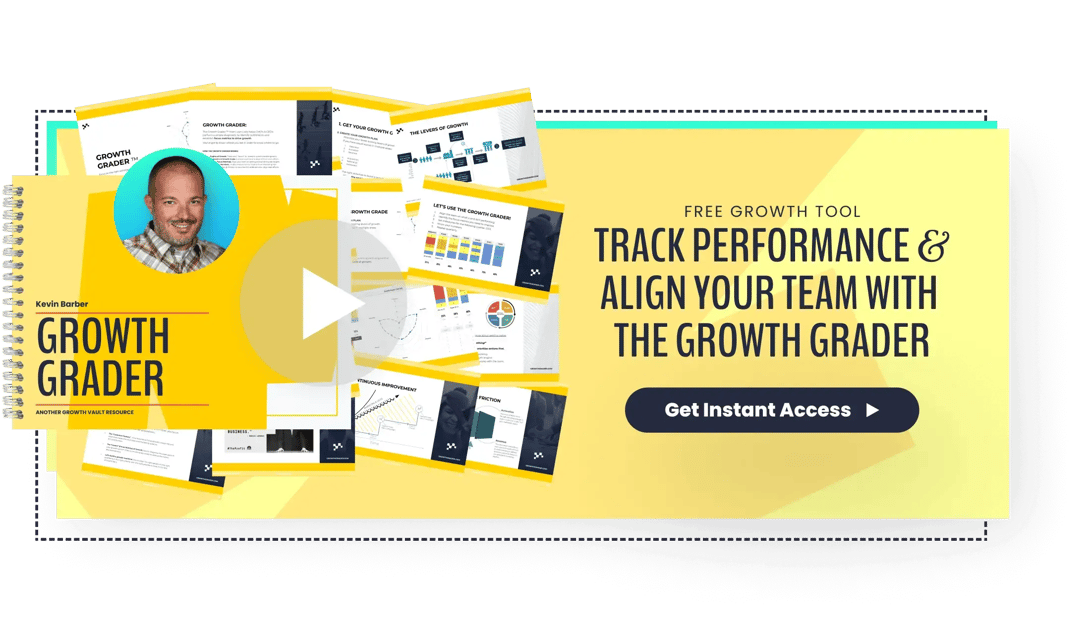
How To Do B2B Social Media Marketing: 5 Simple Strategies
Ninety-five percent of B2B marketers use social media as part of their content marketing strategy.
But just because “everybody’s doing it,” does that mean you should too?
The short answer is yes – but only if you want to grow your business in the coming years.
When talking about B2B social media marketing, many businesses confuse it with trying to ride flash-in-the-pan social media trends or having their CEO do a trendy dance on TikTok in hopes of creating a “viral moment.”
Depending on your industry (and your CEO’s dance skills), that can be a part of your social media strategy, that’s not what we’re referring to in this post.
The type of social media strategy we’re talking about is your strategy for posting to business-friendly social media platforms regularly to build awareness for your brand by speaking to your audience’s problems, being helpful, delivering industry insights, and demonstrating expertise.
That is the most effective way for businesses to leverage social media.
In this article, I will show you how to do it by following five simple strategies.
After reading this, you will know what to post, where to post it, and how to do it without spending a ton of money on content production that won’t offer great ROI.
1. Start With Why
It’s important to know why you’re posting on social media.
What type of business results are you trying to achieve by posting?
It can help to start by answering these questions:
Are you trying to attract new talent to your team?
Are you trying to build brand awareness?
Are you trying to establish yourself as an expert in your field?
Are you trying to educate your audience to build trust and deepen the relationship?
Your answers to these questions will inform what type of content you produce.
For example, if your goal is to attract top talent to your team, you might want to post about some of your company’s core values, so you attract the right people.
Here’s how one LinkedIn professional did just that:
In her post, Alyssa can communicate one of the core values of her company (flexible remote working) by poking fun at some of the companies that don’t share that as a value.
Without directly saying it, she’s also inviting people who are unhappy with their current company culture to look into jobs at her company, Zefr.
This a great example of a post that’s connected to the desired outcome. And by the looks of it, it was quick, easy, and cheap to post.
2. Focus Your Efforts
It can be easy to think that a successful B2B social media marketing campaign requires you to post a thousand times a day on a hundred different platforms, but that’s simply not true.
The best course of action is to choose one or two platforms to focus your efforts on and master them.
The two platforms I would suggest, especially for B2B businesses, are LinkedIn and Twitter.
LinkedIn is an obvious choice as it’s the preferred social media platform for businesses and professionals. It’s also great because people on LinkedIn are already in a business mindset while scrolling.
Twitter is also great because it allows you to find and engage in conversations with your ideal customers and others in your industry.
An effective way to find people on either platform is to search specific hashtags related to your industry or target audience.
Don’t know what those hashtags are?
No problem. Just open Google and type “top hashtags for” and then your industry or topic.
That will help get you closer to conversations about your area of interest or expertise.
Because Lean Labs is a hybrid growth company for tech and SaaS brands, it makes sense for us to search for our ideal customers using hashtags like #SaaSlife or #StartUpFounder.
3. Start Conversations
Social media posts for B2B professionals don’t always have to be about your company or promotional message.
According to the Content Marketing Institute’s report on B2B content marketing benchmarks, budgets, and trends, 87 percent of the most successful B2B content marketers “prioritize the audience’s informational need over your organization’s sales/promotional message.”
That makes perfect sense when further in the same report, it lists the top three goals B2B marketers have achieved using this approach:
- Create brand awareness
- Build trust and credibility
- Educate audiences
A great way to start a conversation through social media is to ask a question of your audience to encourage them to respond.
Another one is to post a contrarian belief about your industry (as long as you’re not being contrarian for its own sake).
Here’s an example of a conversation started by author and personal financial expert Ramit Sethi that uses elements of both of these tactics in the same tweet:
This is a perfect example because many people believe very strongly that owning a home is vastly superior to renting.
By amplifying Noah’s contrarian tweet and adding a prompt for his followers to engage in the conversation in the comments, Ramit can build more awareness, earn trust and credibility, and educate his audience on why renting isn’t always a “waste of money.”
This is another example of content that was created easily and at no cost.
4. Be Human
A social media post should not read like a press release written by a robot. It should have some personality to it.
Embrace imperfection and humor in your posts, and write like an actual person. Here’s a great example of what it looks like to “be human” on social media:
Note how this post uses relevant hashtags to reach the right audience and humor to connect with them. It also has 707 likes and 81 comments which helps achieve the goal of building awareness for Salesloft.
It’s also a very simple post to create. There are no fancy or expensive graphics, it just looks like a screenshot of a faux email posted to LinkedIn.
Another piece to the “be human” puzzle is to engage with your followers. If someone takes the time to leave a comment on your post, the least you can do is acknowledge you’ve seen it by giving it a heart or a like.
If you’re serious about deepening your relationship and building trust with your audience, I would suggest engaging with a thoughtful comment in response.
5. Be Helpful
The next natural step in being human is to be helpful.
Helpful social media content is any content you can use to answer your customer’s questions or educate them in some way.
A great place to start is by going to the FAQ section of your website.
What questions do you often receive from customers? Could you turn any of them into a post for LinkedIn, Twitter, Facebook, or Instagram?
Remember, you don’t need to post to ALL of these platforms. Stay disciplined about which social media outlet you’ve decided to focus on and master.
A few more ideas for helpful and educational content could be:
- Common mistakes/challenges/frustrations people face in your industry
- Tips for achieving the outcome your business provides
- An infographic related to the state of your industry
Let’s look at an example of how Hubspot implemented the “be helpful” approach in a recent post on Instagram.
It starts with a simple infographic on the subject of burnout.
As you swipe through the next four images, you can read a definition of each of the three types of burnout.
Hubspot does a good job of nurturing the engagement of its community by giving a thoughtful response to a comment.
They also take the extra step to be even more helpful by spotlighting and linking to an article that goes into more detail about each type of burnout.
You can see how they spotlight the article in their story below:
Start B2B Social Media Marketing by Creating Your Piece of Content Today
If you aren’t already doing it, posting content on social media is the best thing you can start doing to build awareness, trust, and credibility with your target audience.
If you follow the strategies in this article and post helpful content on one or two platforms for an extended period of time with your audience's best interest in mind, it’s almost inevitable that you’ll reach that goal.
The next best thing you can do to support your social media marketing efforts is to host supporting content on the blog of your company’s website.
That way, when you post on social, you’re able to direct people back to your website to read a more in-depth article and start moving them through your sales funnel.
If you’d like help making sure your website traffic converts into marketing and sales-qualified leads, check out our free resource, the Growth Marketing Playbook for more of our best tips and tricks.






